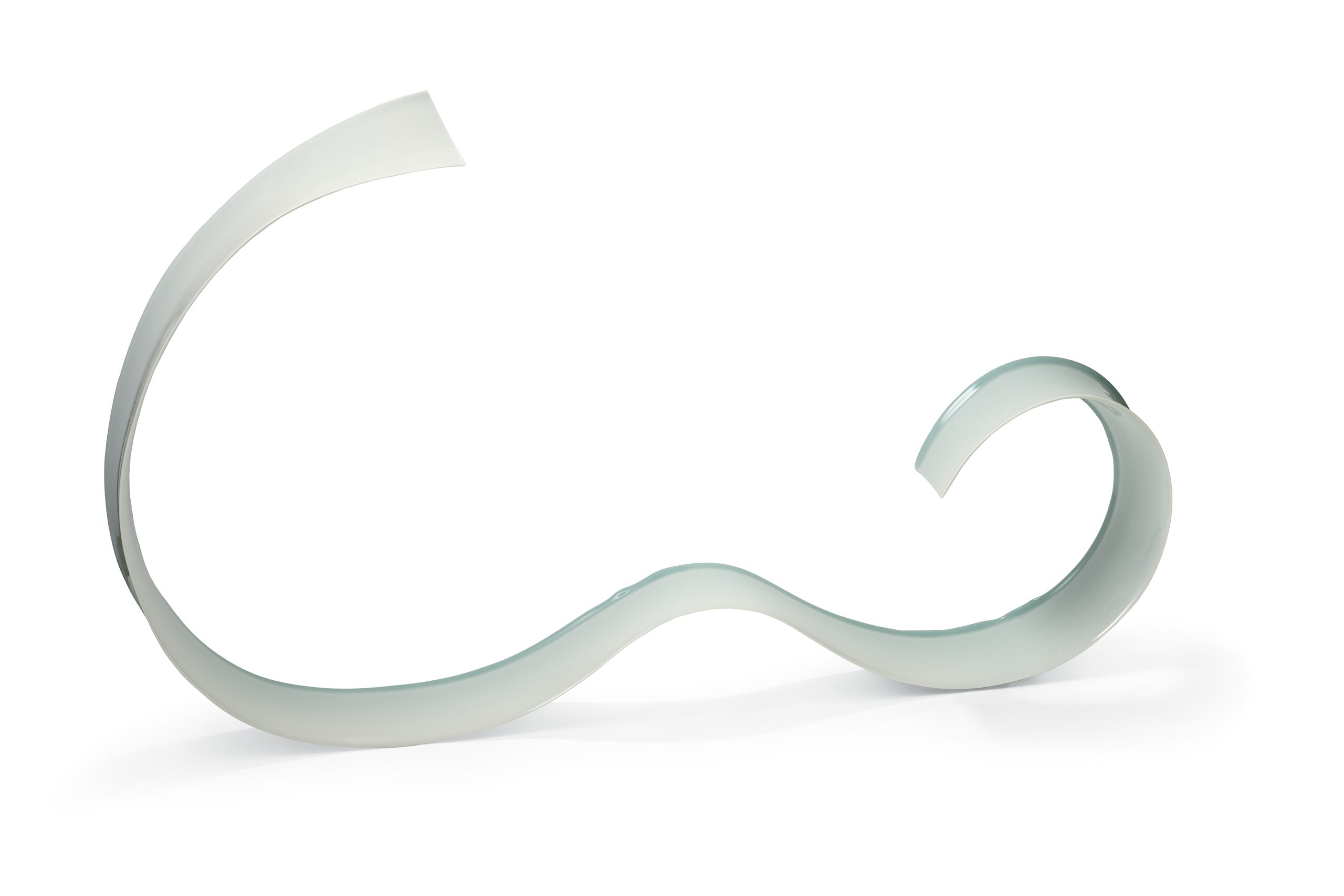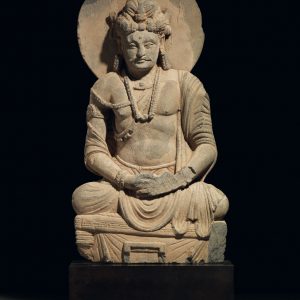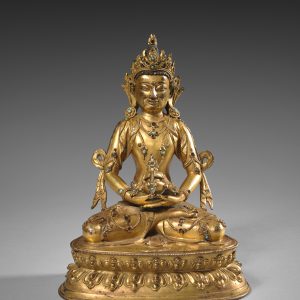Oroshi T18-1
Satoshi Kino, b.1987
Glazed porcelain
2021
81 cm x 7,5 cm x 47,5 cm
Description
Having first created ceramics as a teenager, within ten years, Kino Satoshi was already given his first museum solo exhibition at the New Taipei City Yingge Ceramic Museum, Taiwan. Originally interested in pursuing a career as a stone sculptor, upon entering Kyoto Seika University and encountering the powerful sculptural ceramics of Nishida Jun (1977-2005) in a retrospective exhibition, Kino decided to major in ceramics. Inspired by Nishida’s powerful large and dense forms, he initially attempted to follow in that sculptural perspective but soon realized this did not suit his own aesthetic sensibility.
Fascinated by the potential of fired porcelain to become like stone when polished, Kino chose to focus on porcelain. His sculptures resemble long, billowing ribbons of celadon-glazed porcelain. First throwing a spherical band on the wheel, rather than mold-casting, Kino then severs this tapered band into segments. Using the centrifugal force of the wheel, he manually transforms these thin, attenuated, sections into flowing works of art. After drying, he thoroughly sands the entire work prior to bisque firing. Then, before the final firing, he applies translucent bluish-white (seihakuji) glaze with a compressor before firing in a reduction atmosphere. The artist credits his unique process as enabling works to be integrated into the surrounding space, as he is inspired by nature, particularly the phases of the moon.
Satoshi Kino’s porcelain sculptures are inspired by the serenity inherently found in water, the air, plants, and other natural elements. Furthermore, he tries to replicate the tension that quietly exists in our surroundings, and convey that through his works.
Kino draws inspiration for many of his pieces from the Japanese words used to describe the natural world. For example, “oroshi” is the Japanese term for a strong wind blowing down the slope of a mountain; the delicate edges of his sculptures evokes the sharpness of the wind, and the celadon blue glaze represents the chill on one’s skin. “Evening tide” is a quiet reference of the beach. By combining the use of porcelain as a medium, the challenge of using the potter’s wheel and the meaning of the eloquent words, Kino’s work conveys a distinctive narrative.





